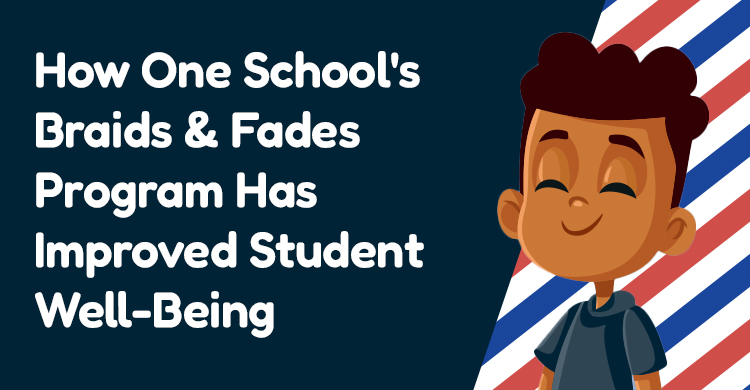Based on Building Your Building: How to Hire and Retain Great Teachers
How many decisions do you think principals make in one day? From morning to night, principals are faced with constant situations that require their decision-making skills. And with all those decisions that principals make in a day—the most important decision he or she will ever make is about the people he or she hires. It’s pretty simple—just think about the impact teachers make on students. In fact, just think about the monumental impact teachers make on student achievement. Doesn’t it make sense that principals make the right decisions when it comes to deciding who they bring into their buildings?
Proactive vs. Reactive Hiring
Unfortunately, many of us have all been there when we hire whoever meets the minimum qualifications because we are either running out of time to fill the vacancy or we are running out of options when we don’t have a lot of applicants to pick from. In both these examples, hiring great teachers can prove to be difficult. However, there are steps principals can take to minimize these barriers. Think about the difference between proactive hiring and reactive hiring. When we are in a situation where we are under pressure to fill a position quickly or we have minimal applications for a position, we are hiring reactively. So how can principals engage in proactive hiring? By creating a robust hiring plan that includes a variety of marketing strategies. Scott Cunningham and I discuss those strategies in our book, Building Your Building: How to Hire and Keep Great Teachers.
The Crisis
Proactive hiring is becoming increasingly important because we are facing a crisis where it is becoming difficult to hire teachers. There are fewer and fewer people going into the teaching profession. In fact, a recent survey showed that in 2018, 54 percent of parents said they did not want their children becoming teachers, but back in 1969, only 15 percent of parents said they did not want their children becoming teachers (Hampson, 2018). Sutcher, Darling-Hammond, and Carver-Thomas (2016) argue that the teacher shortage problem is real—while we have fewer and fewer people entering the teaching profession, we should be seeing a 20 percent increase in teacher demand from 2015 to 2025. Not only is it going to be difficult to find teachers from a pool that is shrinking, but also current teachers are leaving voluntarily at higher rates.
The Principal’s Role
This makes it imperative, then, that for the teachers we do have in our buildings, we do a better job of keeping them. Principals may not have control over factors such as increasing salary for teachers—but principals have control over how they lead. Principals have control over the working environment they create. Principals have control over the culture they create. In fact, Viadero (2018) stated in a survey given to 500 teachers that school leadership was more of a factor than salary when it came to teachers wanting to stay.
Why Teachers Leave
Before we can think about the role principals play in keeping teachers in their buildings, let’s examine all the reasons that make teachers want to leave. One of the major reasons teachers report upon leaving is working conditions (Podolsky, Kini, Bishop & Darling-Hammond, 2016). Working conditions include many factors, with the first being school leadership and administrative support. Another factor is opportunities for professional collaboration and shared decision-making. Finally, accountability and resources are factors under working conditions. There are specific reasons outlined below that teachers attribute to leaving—all of which can be characterized under working conditions:
- Lack of classroom materials
- Buildings falling apart
- Expectations of the job
- Excessive paperwork
- Stress
- Demanding parents
- Student discipline
- Inadequate preparation
- Long hours
These are just a few of the reasons that have been identified—so how can school leaders control those issues? What can school leaders do to minimize the impact of the above-listed factors to create strong, positive working conditions in their buildings?
Some Answers
In order to create a positive working environment where teachers feel supported and valued, Building Your Building: How to Hire and Keep Great Teachers offers several practical strategies to do just that, from how to build strong mentoring programs to how to create a foolproof recognition program; from how to truly support teachers by establishing collaborative working conditions to providing care, encouragement, and help; from learning about adult learning styles in order to offer the most appropriate and engaging professional learning experiences to teachers to tailoring those professional learning experiences to specific teacher needs and wants.
Conclusion
Hiring and retaining teachers is a monumental investment—not just monetarily, but also for the well-being of our students. As principals are charged with ensuring the success of all students, it is imperative that they staff their buildings with great teachers and retain those great teachers they hire. “When teachers have positive perceptions about their work environment, their principals, and the cohesion and support of their colleagues, they are more likely to remain in their schools because of their high levels of satisfaction with their work” (DuFour, DuFour, Eaker, Many & Mattos, 2016, p. 202). It is imperative that principals help create that environment in their buildings.
References
DuFour, R., DuFour, R., Eaker, R., Many, T. W., & Mattos, M. (2016). Learning by doing: A handbook for Professional Learning Communities at Work (3rd ed.). Bloomington, IN: Solution Tree Press.
Hampson, Rick (2018). “Teachers in America: No Matter Where They Work, They Feel Disrespect.” USA Today. Retrieved from: https://www.usatoday.com/in-depth/news/nation/2018/10/17/teachers-appreciation-pay-union-jobs-schools-education/1509500002/
Podolsky, A., Kini, T., Bishop, J., & Darling-Hammond, L. (2016). “Solving the Teacher Shortage: How to Attract and Retain Excellent Educators.” Learning Policy Institute. Accessed at https://learningpolicyinstitute.org/product/solving-teacher-shortage on January 14, 2019.
Sutcher, L., Darling-Hammond, L., & Carver-Thomas, D. (2016). A coming crisis in teaching? Teacher supply, demand, and shortages in the U.S. Palo Alto, CA: Learning Policy Institute.
Viadero, D. (2018). “Teacher Recruitment and Retention: It’s Complicated.” Education Week. Accessed at www.edweek.org/ew/articles/2018/01/24/teaching-shortages -many-answers-for-a-complex.html on January 14, 2019.
[author_bio id=”160″]







